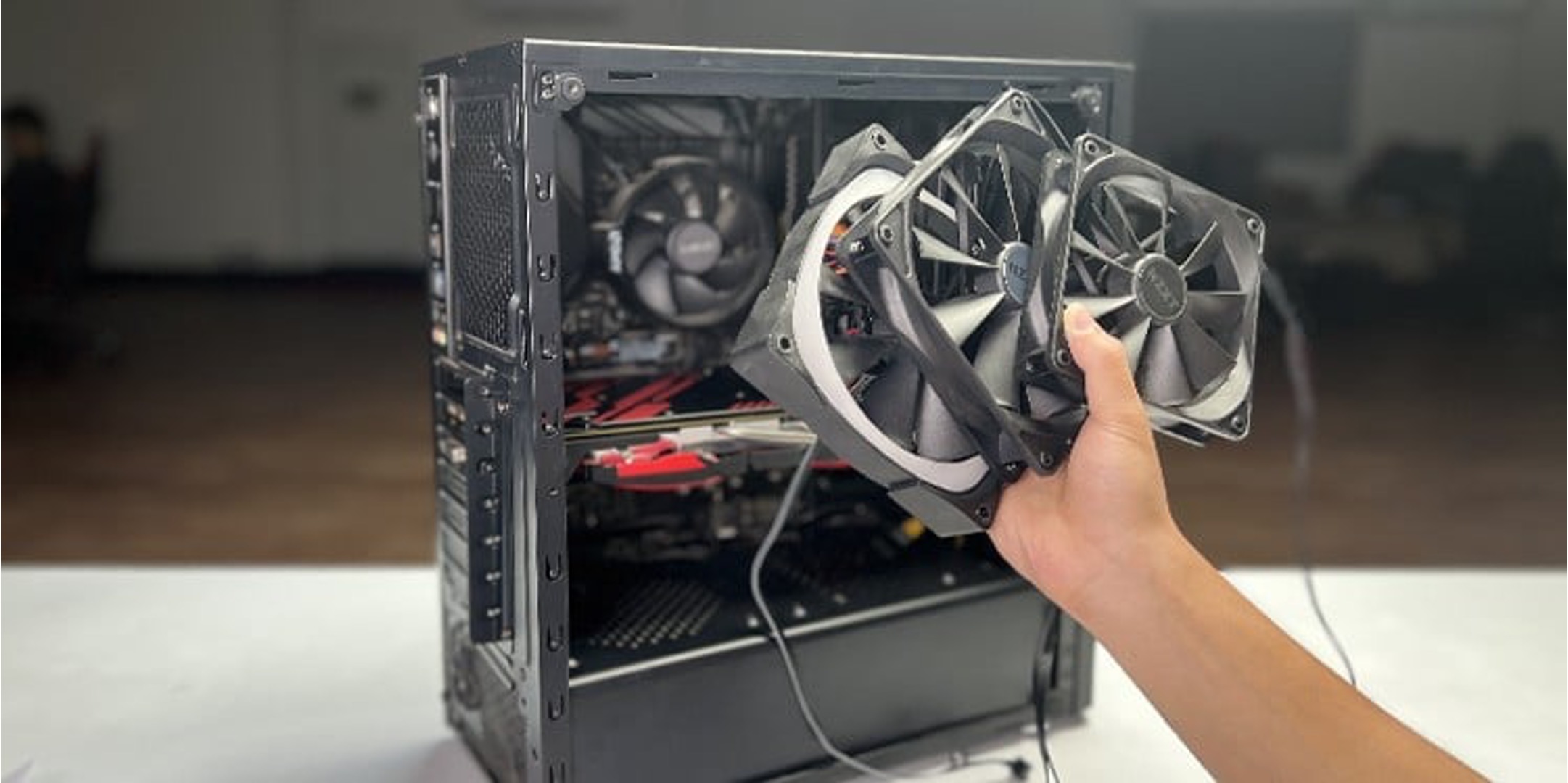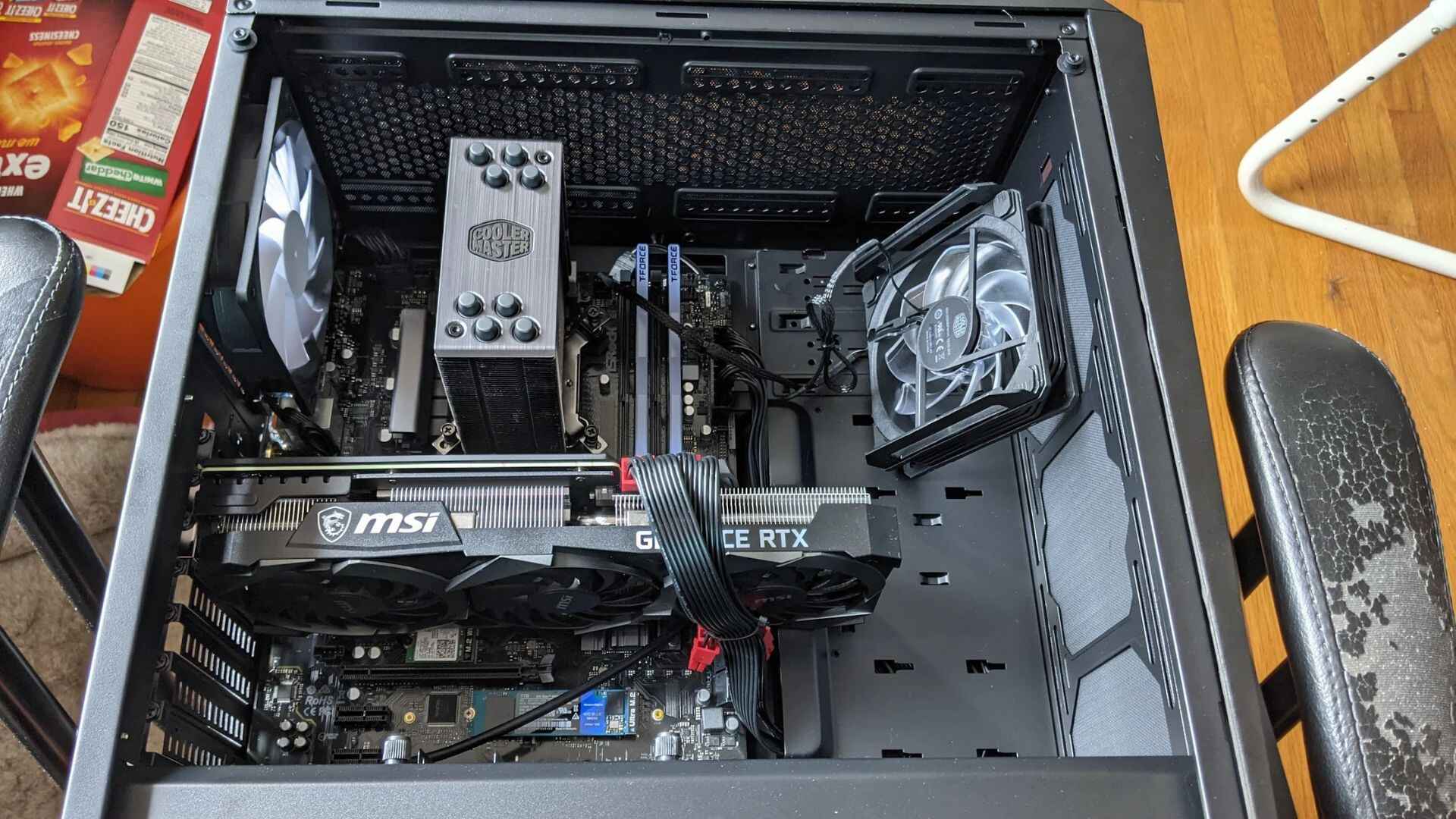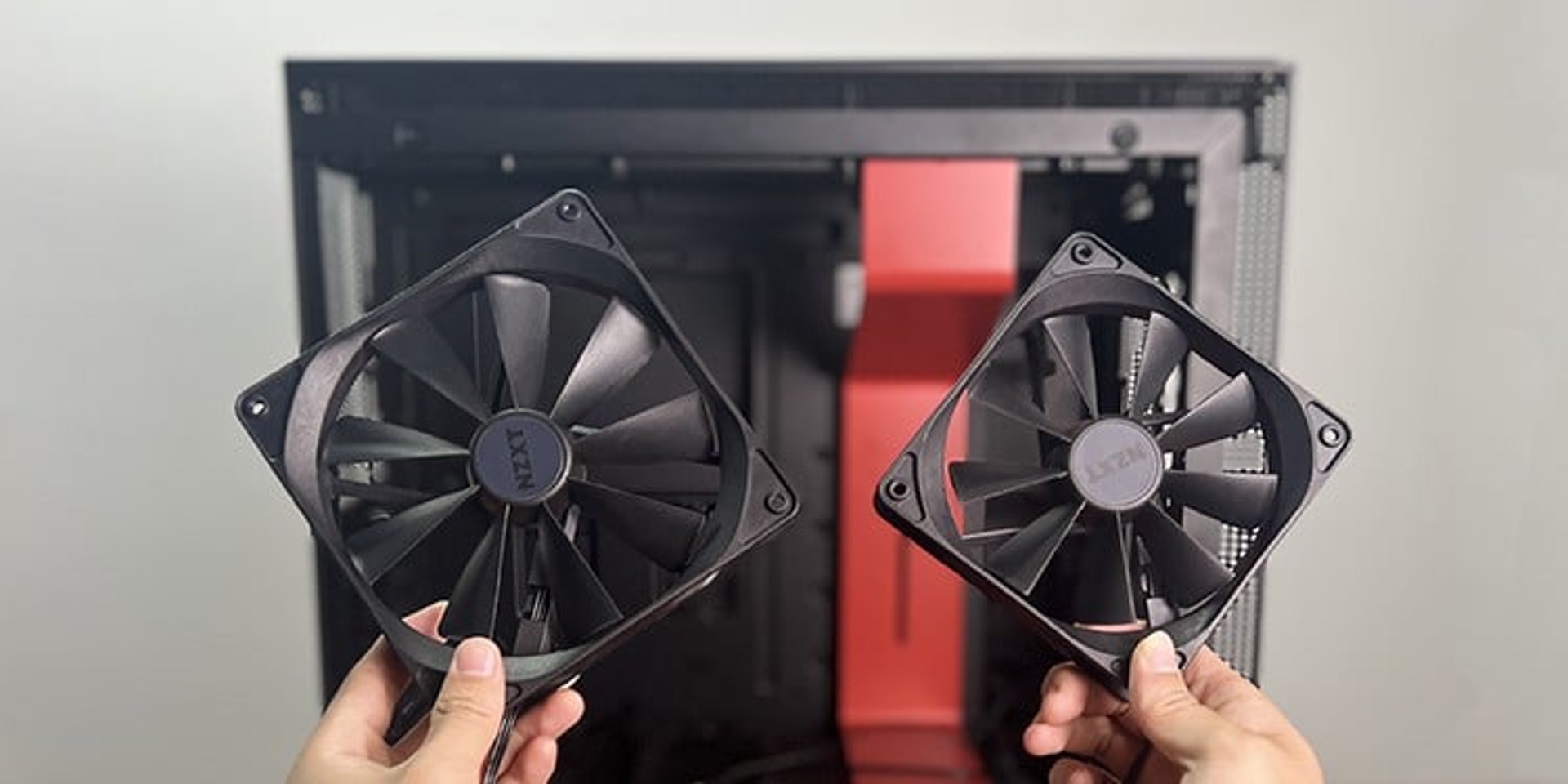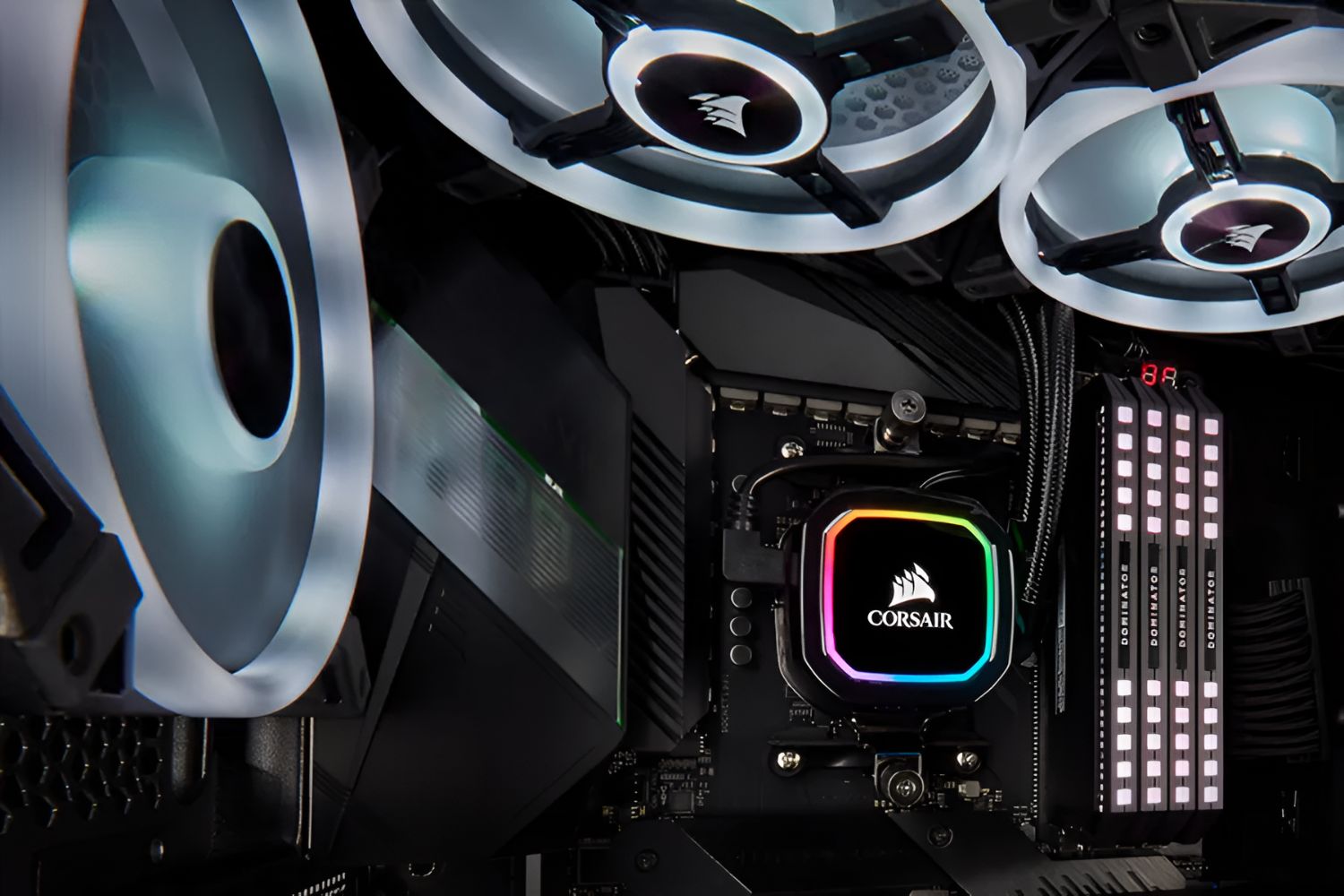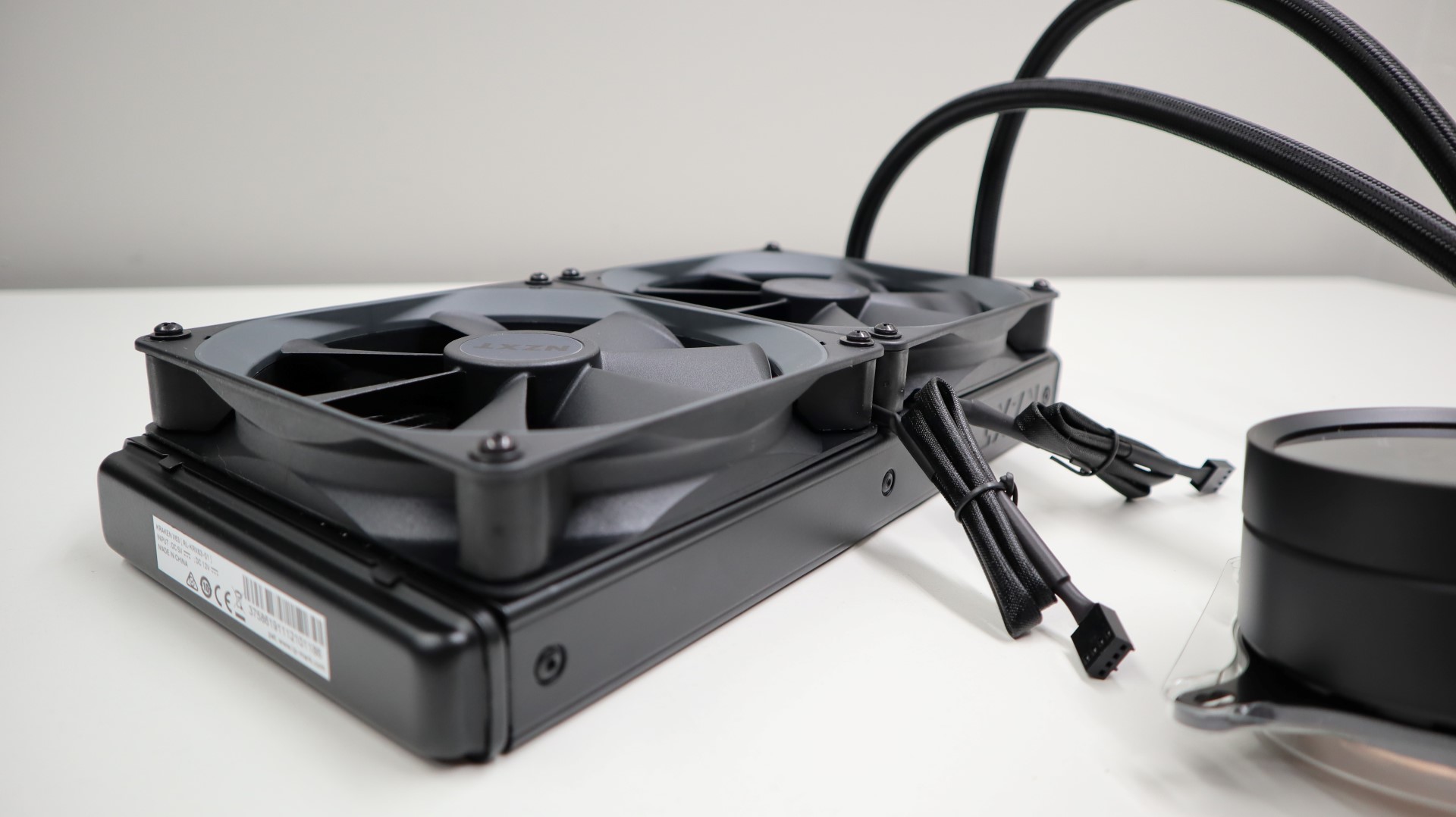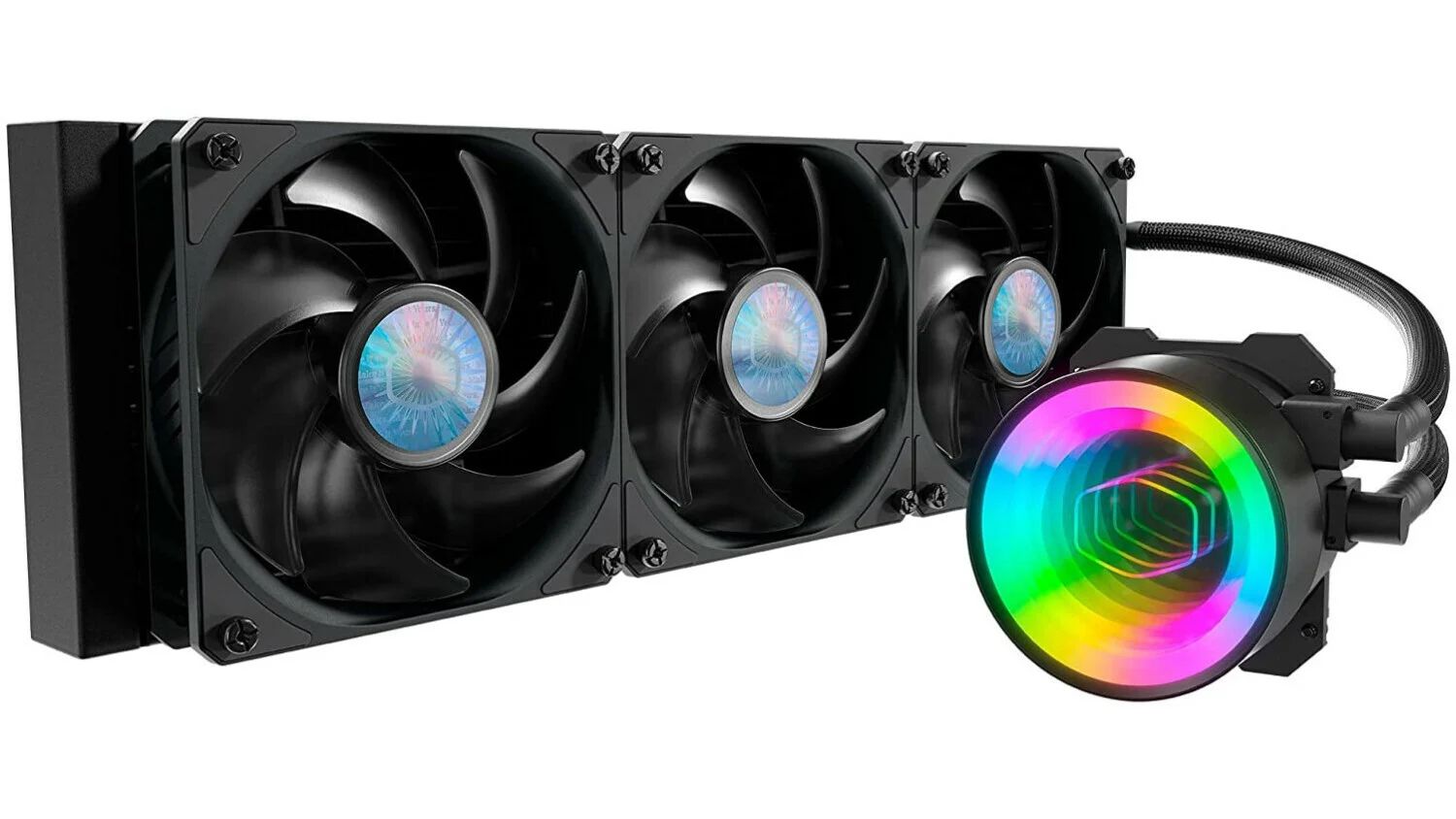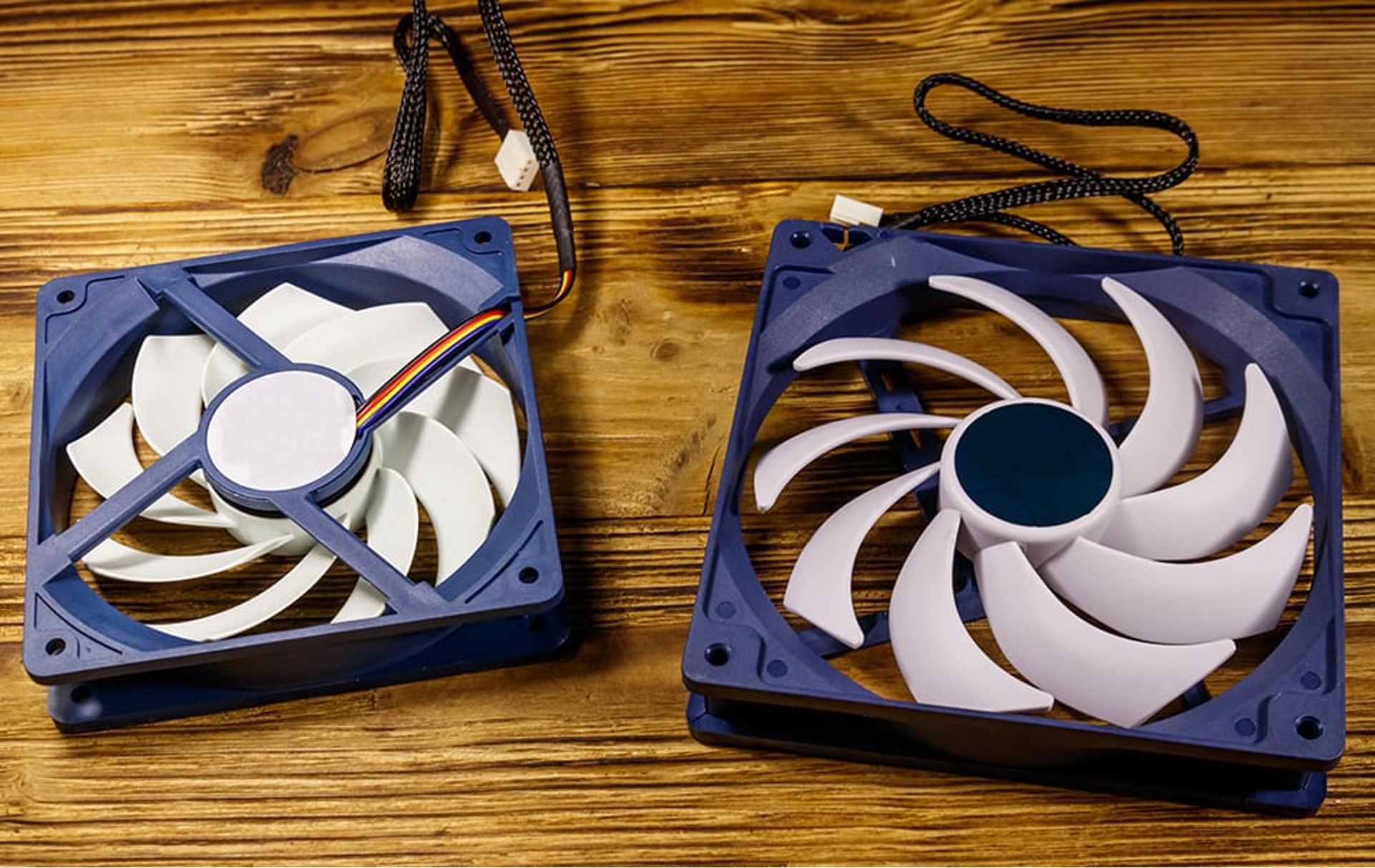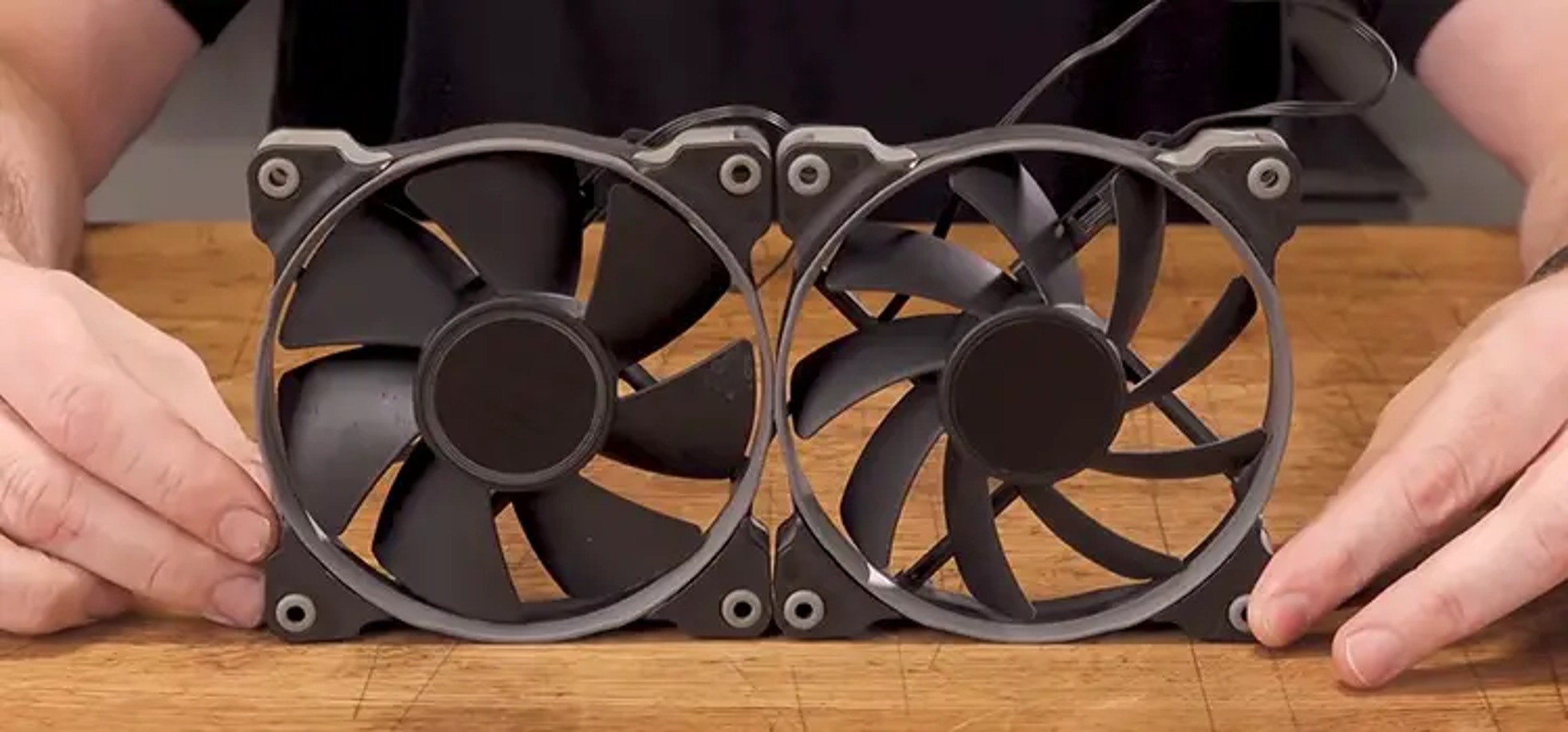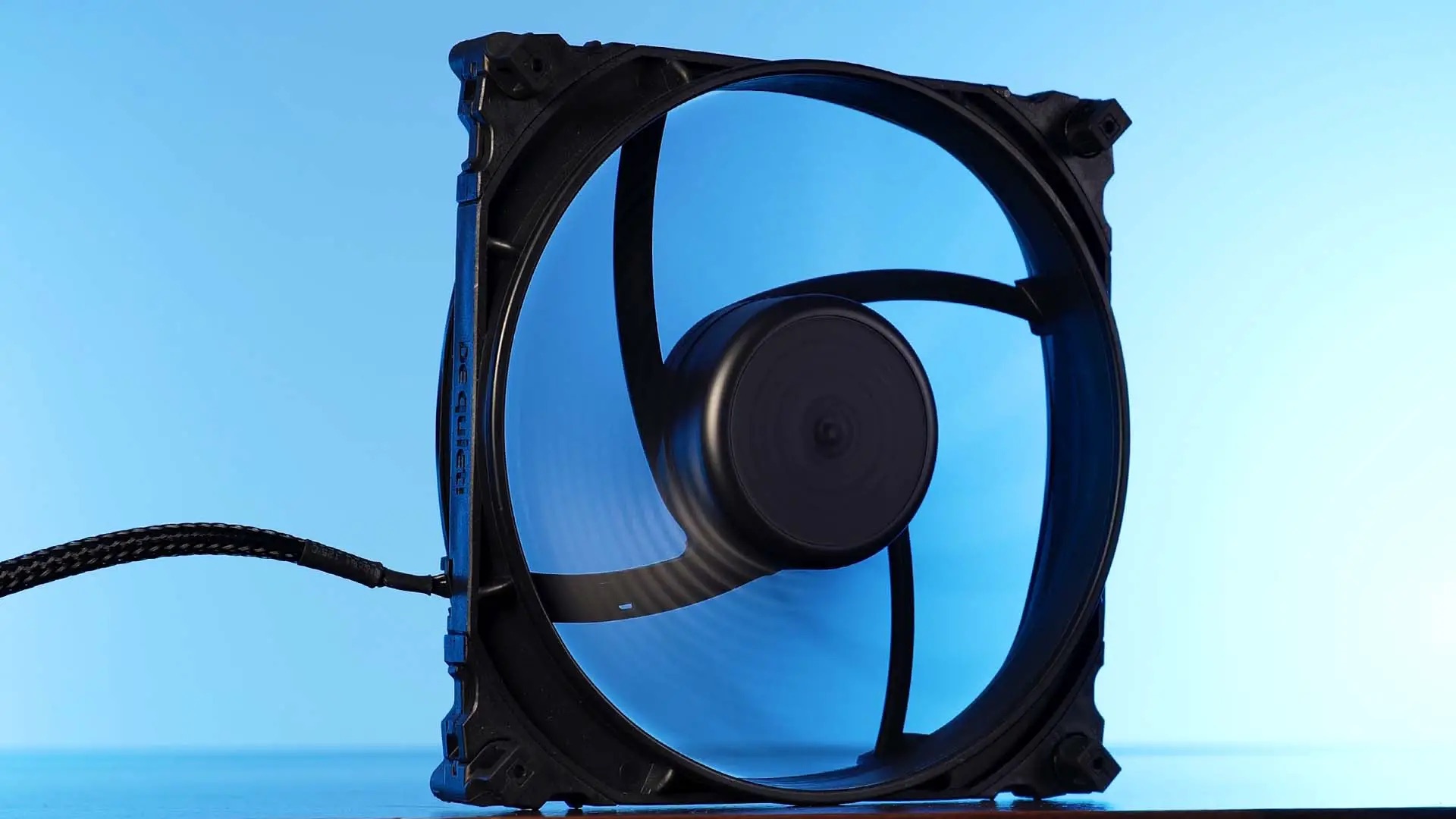Introduction
Welcome to the world of PC building and customization! As you embark on the journey of creating your own personalized computer, it is essential to understand the importance of proper case fan setup. Efficient cooling is crucial for the longevity and performance of your PC components, as heat can be the nemesis of electronic devices.
Case fans play a vital role in expelling hot air generated by the CPU, GPU, and other components, while simultaneously drawing in cool air to maintain optimal temperatures. Without adequate airflow, your PC may suffer from overheating, leading to decreased performance, instability, and potentially irreversible damage to your hardware.
However, determining the optimal number of case fans can be a daunting task, as it depends on various factors such as the type of computer case, the specific components you have installed, and your usage patterns. In this article, we will explore the considerations and best practices to help you make informed decisions when it comes to your case fan setup.
The Importance of Case Fans
Case fans are the unsung heroes of your PC’s cooling system. They work tirelessly to circulate air within your computer case, ensuring that heat is dissipated efficiently and keeping your components running at optimal temperatures.
Heat is the nemesis of electronic components. When temperatures rise too high, the performance of your CPU, GPU, and other hardware can be severely impacted. Over time, prolonged exposure to excessive heat can even lead to permanent damage. This is where case fans come into play.
By actively moving air in and out of your computer case, case fans help to expel hot air and draw in cool air. This constant airflow prevents the buildup of heat and creates a more stable and comfortable environment for your components.
Efficient cooling is not just a matter of protecting your hardware; it can also have a significant impact on performance. When components are operating at high temperatures, they are more prone to thermal throttling, where their speed is reduced to prevent overheating. This can result in decreased performance and slower processing speeds. By maintaining optimal temperatures with adequate case fans, you can ensure that your components can run at their full potential.
Another advantage of proper case fan setup is the reduction of noise. Components operating at high temperatures often require the fans to spin faster, resulting in increased noise levels. By maintaining lower temperatures, case fans can run at lower speeds, reducing the overall noise generated by your PC.
Factors to Consider When Determining the Number of Fans
When determining the number of case fans to include in your setup, several factors come into play. Understanding these factors will help you make an informed decision based on your specific needs and requirements.
1. Size and Type of Computer Case: The size and type of your computer case can influence the number of fans it can accommodate. Smaller cases may have limited space for fan placements, while larger cases may have more flexibility in terms of fan options.
2. Component Heat Generation: The heat generated by your components, particularly the CPU and GPU, will determine the amount of cooling required. High-performance processors and graphics cards tend to generate more heat, necessitating a higher number of fans for adequate cooling.
3. Overclocking and High-Intensity Workloads: If you plan to overclock your components or engage in tasks that put heavy loads on your system, such as gaming or video editing, consider adding extra fans. These activities can generate more heat, requiring additional cooling to maintain optimal temperatures.
4. Ambient Room Temperature: The temperature of the room where your PC resides also plays a role. If you live in a hot and humid climate or keep your computer in a poorly ventilated area, additional fans may be necessary to compensate for the higher ambient temperatures.
5. Noise Tolerance: If you prioritize a quieter computing experience, you may want to strike a balance between cooling performance and noise levels. Adding more fans can enhance cooling efficiency but may result in increased noise due to the higher fan speeds. Consider investing in quieter fan models or opting for fan controllers to adjust the speeds as needed.
6. Desired Cooling Performance: Lastly, consider your specific cooling needs and performance expectations. If you want to ensure maximum cooling efficiency and optimal performance, adding more fans can improve airflow and heat dissipation. However, if you’re building a basic system with lower power components, a minimal fan setup may suffice.
By taking all these factors into account, you can determine the right number of case fans to maintain adequate cooling and optimize the performance of your PC.
Fan Placement and Airflow Considerations
Proper fan placement is crucial for maximizing cooling efficiency and maintaining optimal temperatures inside your computer case. Understanding the concept of airflow and considering the following factors will help you make informed decisions when it comes to fan placement.
1. Intake and Exhaust: Creating a balanced airflow is essential. Typically, you want to position fans at the front or bottom of the case as intake fans, drawing cool air into the case. The hot air is then expelled by exhaust fans positioned at the top or back of the case. This creates a steady flow of air, effectively dissipating heat.
2. Positive Air Pressure: Positive air pressure occurs when the intake fans deliver more air into the case than the exhaust fans expel. This helps to prevent dust buildup by forcing air out of any available gaps or vents, keeping your components cleaner. If dust accumulation is a concern, prioritize more intake fans.
3. Negative Air Pressure: Negative air pressure happens when there are more exhaust fans than intake fans, causing air to be drawn into the case through any available opening. While negative air pressure can improve cooling efficiency, it can also result in more dust entering the case. Regular cleaning may be required to prevent dust buildup in this scenario.
4. Unobstructed Airflow: Ensure that there are no obstructions, such as cables or components, blocking the airflow path. Cables should be neatly arranged and secured away from fans to avoid disrupting the airflow and causing unnecessary turbulence.
5. GPU and CPU Cooler Considerations: If you have a dedicated graphics card, consider the orientation and cooling requirements of the GPU. Some GPUs have dual or triple fans, which may affect the placement of other fans in the case. Additionally, the CPU cooler may influence the positioning of intake and exhaust fans. Ensure that the placement of case fans does not interfere with the cooling mechanisms of these components.
6. Additional Cooling Components: In addition to case fans, consider other cooling components such as CPU coolers, GPU coolers, or liquid cooling systems. These components can supplement the cooling provided by case fans and optimize heat dissipation.
Taking these airflow considerations into account when planning the placement of your case fans will result in better temperature management and improved overall system performance.
Ideal Fan Setup for Different Types of PCs
The ideal fan setup for your PC will depend on the specific type and purpose of your computer. Whether you are building a gaming rig, a home theater PC, or a workstation, considering the following guidelines will help you achieve optimal cooling performance.
1. Gaming PCs: Gaming PCs typically require robust cooling to handle the intense graphics processing and high-performance components. A recommended fan setup for gaming PCs includes at least one intake fan at the front of the case and one exhaust fan at the back or top. Additional fans, such as top or side-mounted intake fans, can also be beneficial for enhanced airflow.
2. Home Theater PCs (HTPCs): HTPCs are designed for media playback and usually have a smaller form factor. Since these PCs usually have lower power components, a minimal fan setup can suffice. A single intake fan at the front or side and one exhaust fan at the back should be adequate to maintain optimal temperatures without excessive noise.
3. Workstations: Workstations typically handle demanding tasks such as video editing, 3D rendering, and CAD work. These tasks can generate a significant amount of heat, so a more robust cooling solution is recommended. Consider using multiple intake fans at the front, along with exhaust fans at the back and top. Additionally, adding a CPU cooler or liquid cooling solution can contribute to improved heat dissipation.
4. Silent PCs: If a quiet computing experience is a priority, focus on fan selection rather than quantity. Opt for larger, slower-spinning fans designed for quiet operation. Fan placement should prioritize exhaust fans at the back and top of the case to ensure warm air is efficiently expelled. Additionally, using dampening materials, such as sound-absorbing pads, in the case can help reduce noise further.
5. Small Form Factor PCs: Small form factor PCs often have limited space for fan placements. Focus on efficient airflow by using compact fans designed for these cases. Prioritize one or two intake fans at the front, along with an exhaust fan at the back or top. Consider using low-profile CPU coolers or liquid cooling solutions to maximize space utilization.
Remember that these guidelines are general recommendations and can be adjusted based on your specific requirements, components, and case design. It is essential to monitor temperatures and adjust fan speeds or configurations as needed to strike the right balance between cooling performance and noise levels for your specific PC setup.
Monitoring and Controlling Fan Speeds
Monitoring and controlling fan speeds is crucial for maintaining an optimal balance between cooling performance and noise levels. By ensuring that your fans are running at the right speed, you can effectively manage temperatures while keeping noise to a minimum. Here are some methods for monitoring and controlling fan speeds:
1. BIOS Settings: Most motherboards allow you to control fan speeds through the BIOS. You can access the BIOS settings by pressing a specific key during the boot-up process. Within the BIOS, you can find options to adjust fan speeds based on temperature thresholds or set them to run at a constant speed. However, the level of control and available options may vary depending on the motherboard manufacturer and model.
2. Fan Control Software: Many fan control software tools are available that allow you to monitor and adjust fan speeds from within your operating system. These tools provide more flexibility and customization options compared to BIOS settings. They often include features such as fan curves, which let you set specific fan speeds based on temperature readings.
3. Fan Controllers: Fan controllers are hardware devices that allow you to manually adjust fan speeds. These devices are installed in a drive bay of your computer case and provide physical knobs or buttons to control fan speeds. They offer a convenient and accessible way to fine-tune fan speeds in real-time without the need to access BIOS settings or software interfaces.
4. Manufacturer Software: Some component manufacturers provide their own software utilities that allow you to monitor and control fan speeds for specific components. For example, graphics card manufacturers often offer software tools for adjusting the speeds of their GPU fans. These utilities may provide comprehensive control over fan speeds and temperature thresholds specific to that component.
5. Hardware Fan Speed Controllers: If you prefer a manual and hardware-based approach, you can install standalone fan speed controllers. These devices connect directly to the fans and allow you to manually adjust their speeds using physical knobs or switches. They offer a simple and reliable way to adjust fan speeds without the need for software or BIOS settings.
Regardless of the method you choose, regularly monitoring and adjusting fan speeds based on system temperatures can ensure efficient cooling while minimizing noise levels. Finding the right balance will help to extend the lifespan of your components, improve performance, and provide a quieter computing experience.
Recommendations for Silent and Efficient Fan Setup
When aiming for a silent and efficient fan setup, there are several recommendations you can follow to strike the right balance between cooling performance and noise levels. Implementing these suggestions will help ensure a quieter computing experience without compromising the cooling efficiency of your PC.
1. Choose High-Quality Fans: Invest in high-quality fans known for their silent operation. Look for fans with features like fluid dynamic bearings (FDB) or hydraulic bearings, as they tend to produce less noise compared to sleeve or ball bearings. Additionally, fans with lower decibel ratings can help significantly reduce noise levels.
2. Optimize Fan Placement: Proper fan placement and airflow management are crucial for a silent and efficient setup. Position fans strategically to create a smooth and balanced airflow, maximizing cooling efficiency while minimizing noise. Prioritize exhaust fans at the back and top of the case to ensure warm air is expelled effectively.
3. Use Fan Filters: Dust buildup can cause fans to work harder and increase noise levels. Installing fan filters on intake fans helps prevent excessive dust accumulation, reducing the need for frequent cleaning and minimizing fan noise over time.
4. Consider Fan Speed Control: Implement fan speed control to adjust fan speeds based on temperature readings. This allows fans to run at lower speeds when the system is cool, reducing noise levels. BIOS settings, fan control software, or hardware fan speed controllers can provide the flexibility to fine-tune fan speeds according to your preferences.
5. Insulate and Dampen Noise: Use sound-absorbing materials, such as foam padding or acoustic panels, inside the case or on side panels to reduce noise resonance. Cable management can also help minimize turbulence and unwanted vibrations that contribute to noise.
6. Cable Management: Neatly arrange cables, ensuring they are not obstructing the airflow or touching the fan blades. Cable ties and clips can help secure and organize cables, reducing the potential for unwanted noise and improving overall airflow.
7. Consider Fanless Cooling Solutions: In certain cases, fanless cooling solutions can provide silent operation. These include passive CPU coolers or fanless power supplies. However, it is essential to consider the specific requirements and thermal limitations of your components when opting for fanless cooling.
8. Monitor Temps Regularly: Continuously monitor the temperatures of your components to ensure they remain within acceptable ranges. Elevated temperatures can increase fan speeds, leading to louder operation. Regularly clean and maintain your fans and heatsinks to prevent dust buildup, as this can negatively impact cooling performance and increase noise levels.
By implementing these recommendations, you can achieve a silent and efficient fan setup that ensures effective cooling performance while providing a quieter computing experience.
Conclusion
Proper case fan setup is crucial for maintaining optimal temperatures and prolonging the lifespan of your PC components. Balanced airflow and efficient cooling are key to achieving this goal. By considering factors such as the size of your computer case, component heat generation, and the specific requirements of your PC type, you can determine the ideal number and placement of case fans.
Monitoring and controlling fan speeds is equally important. Whether through BIOS settings, fan control software, or hardware controllers, adjusting fan speeds allows you to strike the right balance between cooling performance and noise levels. Regularly monitoring system temperatures and cleaning fans and heatsinks keeps them running efficiently and reduces noise caused by dust buildup.
For those seeking a silent and efficient fan setup, high-quality fans, optimized placement, and noise-dampening measures are crucial. Selecting fans known for their silent operation, optimizing airflow, and using filters and sound-absorbing materials can significantly reduce noise levels without compromising cooling performance. Additionally, cable management and considering fanless cooling solutions can further enhance a quieter computing experience.
Remember, the specific requirements and preferences for your PC setup may vary. It’s essential to assess your unique needs, components, and usage patterns to determine the most suitable case fan setup for your specific situation.
With the right fan setup, your PC will remain cool, quiet, and efficient, ensuring optimal performance and a more enjoyable computing experience.







